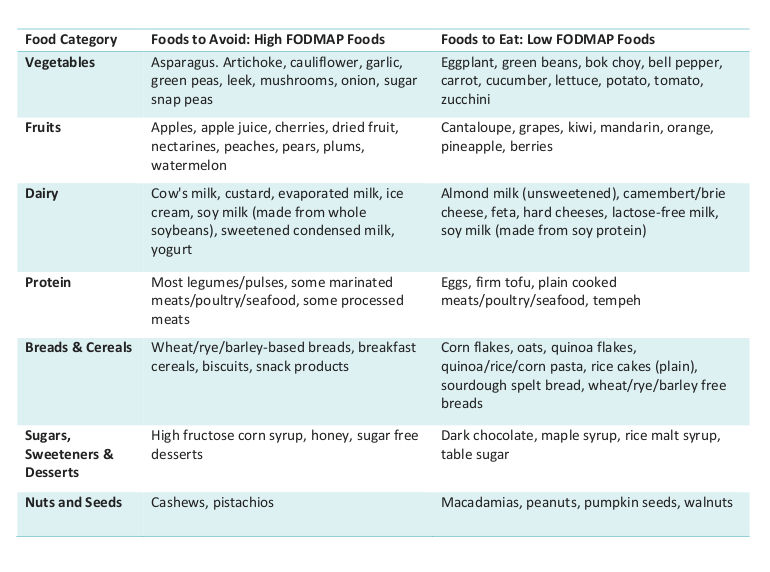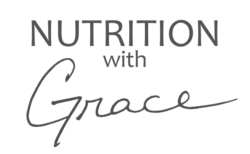table of contents
Now that you’ve used herbal treatments to wipe out the “bad” guys and started the work to repair your small intestine, what’s next?
Long-term success in preventing a SIBO relapse relies on identifying the root cause (remember, SIBO is a symptom not a cause) and making lifestyle changes.
This article will go in depth on the purpose of a special SIBO diet, a variety of SIBO diet plans, including the Elemental Diet for SIBO, and how to choose which diet plan is right for you. Finally, we’ll touch on a few other lifestyle changes that can help with long-term success and relapse prevention.
Let’s dig in!
The Purpose of a SIBO Diet Plan
Since the treatment of SIBO can often take several months (or longer) and relapse is so common, long-term success depends upon preventing the overgrowth from reoccurring. It’s also important to repair the damage that was caused by the overgrowth, such as inflammation, and to identify and treat malabsorption or nutritional deficiencies.
Therefore, there are three primary goals for following a special SIBO diet plan. These are: (1)
- Preventing “bad” bacteria from over-multiplying (i.e. overgrowth)
- Reducing inflammation
- Addressing nutritional deficiencies
This article will discuss 5 possible SIBO diet plans that are intended to address these goals. First up is the elemental diet.
Elemental Diet for SIBO
This diet is actually intended as a treatment method for decreasing the overgrowth when all other treatment plans have failed. This is because of how unpalatable and expensive this diet is to follow.
The elemental diet consists of meal-replacement drinks that contain only the simplest forms of nutrients (i.e. glucose for carbs, fatty acids for fats, amino acids for protein plus added vitamins and minerals). This allows the nutrients to be absorbed quickly at the top of the small bowel, essentially starving the bacteria. (2)
Although this diet can be difficult to stick to, it can be effective. This was demonstrated in one study, which found that 80% of their patients showed a normal lactulose breath test (one of the tests used to diagnose SIBO) and improved symptoms after two weeks on the diet. (3)
However, there is a high recurrence rate with this treatment plan. This is because it is difficult to eliminate all of the bacteria with diet alone. If even one bacterium is left after treatment, overgrowth can quickly return.
There are also some important warnings associate with the elemental diet. These include: (4)
- Due to the risks associated with following the elemental diet, only do so under medical supervision.
- Do not try a homemade elemental diet formula due to the high risk of nutrient deficiency.
- The elemental diet should not be used at the same time as any antibiotic treatment for SIBO.
4 Types of SIBO Diet Plans
1. Low-FODMAP Diet
The low-FODMAP diet, sometimes referred to as a low fermentation diet, is often used to manage symptoms of SIBO and IBS. This is because it is low in fermentable carbs, which are thought to feed the overgrown bacteria in the gut.
These fermentable carbs include:
- Oligosaccharides (made up of fructans and galactans)
- Disaccharides (lactose – milk sugar)
- Monosaccharides (fructose – fruit sugar)
- Polyols (sugar alcohols such as sorbitol, mannitol, xylitol, and maltitol)
These foods trigger symptoms such as stomach pain, gas, bloating, constipation and/or diarrhea, but are not considered a root cause of IBS or SIBO. Therefore eliminating them can be a good first dietary approach. (5, 6, 7)
Low-FODMAP Diet Plan for SIBO
The idea here is to follow an elimination diet process after you have completed a round of prescribed/herbal antibiotics. This includes eliminating all high-FODMAP foods for 4-8 weeks and then reintroducing one thing at a time in order to determine what foods trigger your symptoms. (8)
Note that I said to start this diet AFTER your prescribed/herbal antibiotics. This is because it is believed the bacteria can go into a hibernation-like state while on a low-FODMAP diet and therefore won’t be as affected by the antibiotics if you do them at the same time. It is recommended to follow a “normal” diet during drug treatment and then start your dietary treatment after that’s complete.
In addition, this diet plan is not intended to be followed long-term. This is because there is a possibility that long-term elimination of high-FODMAP foods (which are important for overall gut health) will negatively change the makeup of your microbiome. That being said, additional research needs to be done to fully understand this process. (8, 9)
Now, that was a lot of science jargon and you’re probably saying to yourself, “Get to the good stuff already! I want to know what I can and can’t eat.” No problem!
Here’s the run down of what foods are high- vs low-FODMAP. (10)

Please note, this is not an exhaustive list of foods that you can/cannot eat while following a low-FODMAP diet.
It’s important to work with a dietitian in order to make sure you are eating enough variety and are not at risk for nutritional deficiency. A couple of nutrients to pay particular attention to are iron and calcium. (8)
2. Candida Diet
There is a lot less published research about how candida overgrowth in the gut occurs and the effectiveness of the Candida Diet on reducing symptoms. However, similar to SIBO, small intestinal fungal overgrowth (SIFO) is characterized by an excessive amount of fungal organisms growing in your gut. This is also usually accompanied by symptoms such as upset stomach, bloating, gas, diarrhea, and nausea. (11)
Like the low-FODMAP diet, the Candida Diet was developed to starve the harmful organisms that have grown out of control in your gut. The intent is to decrease inflammation and allow the gut to heal by cutting out certain types of foods. The next step is to slowly reintroduce those foods based on your individual tolerance.
Some general guidelines to follow include: (12)
- Avoid added sugars
- Focus on non-starchy veggies
- Look for low-sugar fruits
- Eat lots of fermented foods
- Minimize caffeine
- Cut back on alcohol
- Drink lots of water
For a comprehensive list of foods to eat and avoid, as well as some well-balanced and delicious recipes, visit The Candida Diet website.
3. Gut and Psychology Syndrome Diet (GAPS)
A doctor developed The GAPS Diet in 2004. It’s based on the theory that a variety of psychological conditions overlap with various physiological conditions and both stem from an unhealthy gut. Some of these conditions include ADD/ADHD, autism, dyslexia, allergies, eczema, asthma, and celiac disease.
This diet focuses on eliminating all processed foods, refined sugar, most dairy, starchy foods, grains and non-organic meats. It recommends replacing these with organic whole foods and incorporating various “gut healing” foods such as bone broth and fermented foods (i.e. sauerkraut, kimchi, and homemade yogurt). Lastly, the diet protocol discusses which foods should be eaten together and which foods should be eaten alone for optimal digestion.
Note: Nutrition with Grace does not endorse this diet as a treatment option for SIBO/IBS because there is little-to-no peer reviewed research to support it. However, I thought it was important to include info about it here because you are likely to hear or read about it at some point during your gut health journey. This is also in no way an endorsement for the anti-vaccine beliefs of the diet creator.
4. Specific Carbohydrate Diet (SCD)
Created to help those with Crohn’s disease, ulcerative colitis, diverticulitis, celiac disease, cystic fibrosis, and chronic diarrhea, the Specific Carbohydrate Diet (SCD) focuses on eliminating foods based on their molecular structure. (13, 14) Supporters of the SCD now believe it can help those with more general digestive issues, such as IBS, however there is minimal research to support this theory.
This is a phased diet which starts with a limited list of “allowable” foods in order to promote gut healing and is followed by slowly reintroducing some foods back into the diet as tolerated. In short, starchy foods, lactose, grains, corn, some legumes, and all sweeteners other than honey, saccharine, and the occasional stevia are all prohibited. There is also an emphasis on cooking, peeling and deseeding fruits and vegetables for better tolerance.
Note: Similar to the GAPS diet, Nutrition with Grace does not endorse this diet as a treatment option for SIBO/IBS because there is little-to-no peer reviewed research to support it. Again, I thought it was important to include info about it here in case you hear or read about it elsewhere.
How Do You Choose Which SIBO Diet Plan is Right for You?
In order to figure out which SIBO diet plan is the best option for you, it is essential to work with a licensed professional who specializes in diet and nutrition (AKA a dietitian).
This is particularly important when doing any kind of elimination or restrictive diet in order to prevent nutrient deficiencies and other complications. Moreover, they can help you get to the root cause of your symptoms so you can return to eating the foods you enjoy without fear of how your body will react.
Other SIBO Friendly Lifestyle Changes
In addition to dietary changes, there are a variety of lifestyle changes that you can implement to help relieve your symptoms. These include:
- Stop taking antacids or Proton Pump Inhibitors (PPIs)
- Eat slowly and chew until food is applesauce consistency
- Eat enough food to satisfy your hunger
- Start with cooked, soft foods and soups
- Drink enough water throughout the day
- Wear looser clothes (especially during the eradicate phase)
- Get at least 7-9 hours of sleep per night
- Start a food diary to track symptoms, trigger foods, etc.
- Stress management (i.e. yoga, journaling, meditation, low-intensity exercise, take a long bath)
Final Thoughts
If you have gone through the SIBO eradication phase and are ready to start the diet phase, the low-FODMAP and candida diets have the most evidence to support their effectiveness with SIBO and IBS.
Don’t forget to seek out the help of a dietitian before drastically changing your diet. In addition to helping prevent harmful side effects, they also serve as an essential piece of your support system through what is often a difficult and emotional journey.
Finally, there are many diets out there that claim to treat or even cure your gut issues and you probably have tried at least a few of them already. I feel like a broken record, but the fact of the matter is you will never find long-term relief until you identify the root cause of your symptoms and treat that.
want this article?
download now, reference later!
jumpstart your journey to better gut health






